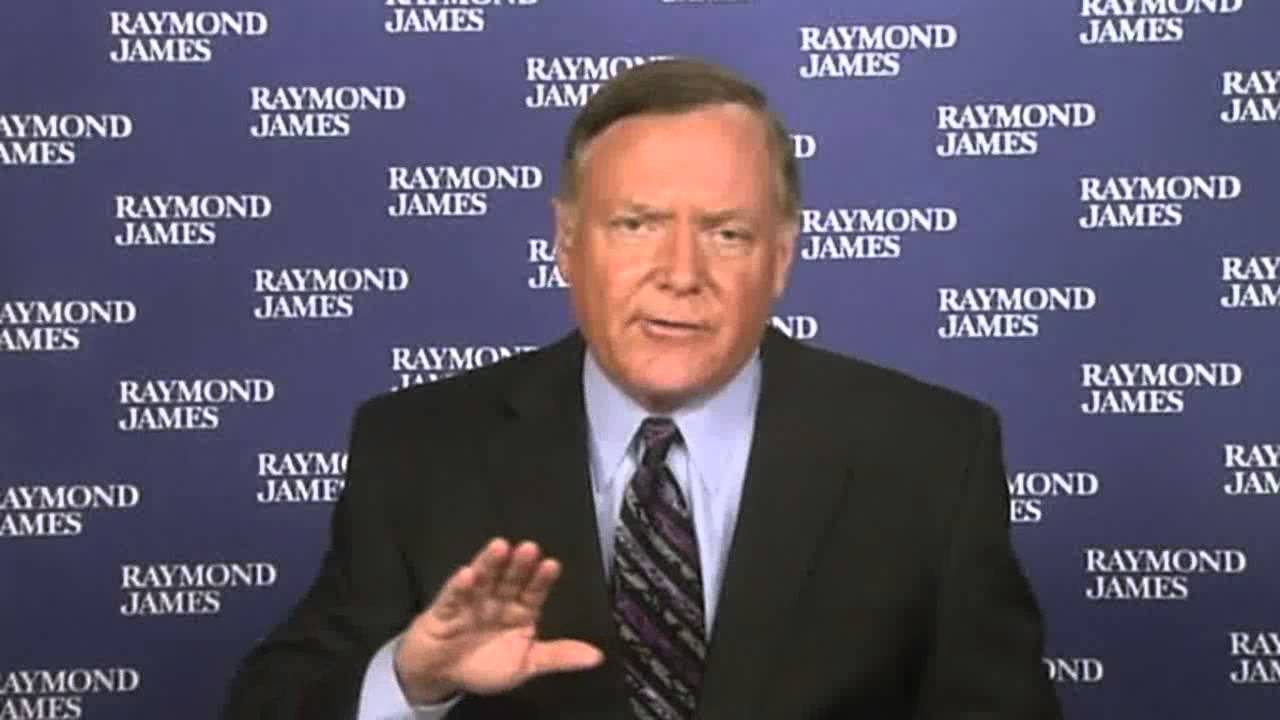Dune
by Jeffrey Saut, Chief Investment Strategist, Raymond James
February 16, 2016
“I must not fear. Fear is the mind-killer. Fear is the little-death that brings total obliteration. I will face my fear. I will permit it to pass over me and through me. And when it has gone past I will turn the inner eye to see its path. Where the fear has gone there will be nothing. Only I will remain.”
. . . Bene Gesserit, Litany Against Fear, from the movie “Dune”
Maybe instead of titling this morning’s report “Dune” I should have titled it “Doom” because it has been the worst stock market start to a new year EVER (Chart 1). The 31 session “selling stampede” (as of last Thursday) has fostered fear among investors. Fear we are headed for a recession. Fear because it is indeed the worst start of the year ever. Fear because there was no Santa Rally. Fear because of the mantra “so goes the month of January, so goes the year” (Hirsch). Fear because the December 2015 closing low was breached on January 6, registering a “watch out” signal from Lucien Hooper’s December Low Indicator (Hooper). With that breach of the December low, Andrew Adams and I began suggesting the markets were involved in a “selling stampede.” As often stated, such stampedes tend to last 17 – 25 sessions with only one-to three-session pauses/rally attempts before the decline resumes. Some have lasted 25 – 30 sessions, but it is rare to have one extend for more than 30 sessions. And that statement prompted this question from one of our financial advisors, “You wrote that the longest ‘buying stampede’ you have ever seen was 61 sessions, but what about the longest ‘selling stampede’?” Certainly a fair question and with a quick peruse of my notes the response was, “38.”
So last week the D-J Industrial Average (INDU/15973.84) followed what many of the other indices have done and traveled below its August 25, 2015 closing low of 15666.44, which we have been using as a confirmation level for the Dow Theory “sell signal” of last August. As stated, we chose to ignore said signal likening it to the “flash crash” Dow Theory “sell signal” of May 2010 that we thought was an aberration and we were subsequently proven right (read: false signal). In hindsight, however, ignoring last August’s signal looks pretty stupid. But that’s the market’s job, to make people look stupid from time to time. As my friend Mary Lisanti emailed me last week:
I always think we are close to a bottom when the really smart people start feeling stupid. I have been doing a lot of digging around and one of the interesting things about this market is that the only comparison everyone is making is to 2008-2009 because many of the younger people have not seen any other recession. Explaining to them that that was a “once in a lifetime” situation falls on deaf ears.
You can read the rest of Mary’s insightful comments in last Thursday’s Morning Tack.
Speaking to the “recession fear,” one of our financial advisors recently sent this to his clients:
We recommend you read this short article (Recession). The U.S .stock market would have you believing the U.S. economy is headed for a recession, or is already in one, which would make you understand the declines we have seen. Whether we are in a recession, or going into one, is yet to be determined. The declines are real, but the reasons may not be. I quote from the article, “There is a massive disconnect between what the stock market is telling us and what is happening in the real economy. The stock market is leading us down the wrong path.” Don’t get me wrong. There is plenty of uncertainty in the market, plenty of domestic and global worries, and plenty of herd (stampede) behavior occurring daily, but it begs the question; could this behavior have been carried too far, or is the market wrong altogether?
Of course you don’t have to have a recession for a bear market to occur. Since 1968, the S&P 500 has had ten bear markets (a 20%+ decline), but four of them were not accompanied by a recession. Then there is fear of a profits recession, yet when we examine the facts they suggest this is not the case. To wit, as of last Friday roughly 75% of the S&P 500’s companies had reported earnings and over 70% have beaten the estimates. Granted earnings are down ~5% year-over-year, but if you exclude the energy companies’ earnings, the rest of the S&P 500’s earnings are up ~1.0%. That’s pretty slow earnings growth, however it is still growth. Moreover, auto sales are good, employment is decent, wages have finally “hooked up,” the Fed looks like it is on hold, commercial and industrial (C&I) loans by banks are growing at a 13% pace (read: lending standards are not tightening), and the list goes on suggesting a recession is not on the horizon. So where does this leave us?
Well, last Thursday’s close by the D-J Industrials took out the August 25, 2015 closing low and caused us to write this in Friday’s Morning Tack:
So while the SPX held its “War of 1812” low, the Dow Industrials did not hold their August 25, 2015 closing low. While not a “decisive” breakdown, a break is a break is a break. Accordingly, after I spoke at a conference last night, I went through some portfolios and targeted the weakest stocks. Some of their fundamentals still look good and some do not. So unless we get a straight up rally on today’s opening bell, I will be selling some of the stocks with weak fundamentals and trying to hedge some of the others in an attempt to manage risk.
After writing those closing words I climbed onto a plane at 9:00 a.m. When I arrived in Atlanta it was 11:00 a.m. we had gotten a “straight up rally on the opening bell” (Chart 2) with the Industrials up 225 points (Straight Up). An hour later I caught another plane to Tampa and on touchdown the Dow was better by 300 points. Warping into my trading turret, I was greeted with the ubiquitous question, “Did we get the straight up rally on the opening bell?” My response read, “I have been in an airplane all day, so I did not sell anything. I will reassess things over the weekend.” Well, it’s “over the weekend” and pundits on the Street of Dreams are picking apart Friday’s bullish action (+314 Dow points) as being “weak,” noting it wasn’t a 90% Upside Day, the breadth was not all that good, there were more new lows than new highs, etc. My friend Jason Goepfert (SentimenTrader) responds:
The S&P 500 had its best day in weeks, but the number of 52-week highs on the NYSE fell to its lowest level in two weeks. That raises concerns that we're just seeing another dead cat bounce, a typical bear market rally that's doomed (there’s that word again) to fail. But prior instances of contracting new highs on an initial rally off a low have not supported that idea. The S&P 500 carved out an island reversal over the past three days. This happens when prices gap down to a new low, then gap up the following day. It doesn't happen often in the broader market, but when it does, it was a good sign if buyers did not immediately return.
The call for this week: So the question is, “Did the selling stampede end last Thursday at session 31?” The answer is, “maybe.” The SPX made an “undercut” low below its January 20, 2016 intraday low of 1812.29 last week, but the Dow did not. While the Dow closed below its August 25, 2015 closing low of 15666.44, by a mere 6 points (not decisive), it did not take out its intraday low of 15370.33 made on August 24, 2015. I guess one could argue that it was an undercut low on a closing basis. The economically sensitive D-J Transports, however, looked to have a bottom on January 20 and are suggesting there is “no recession” in the foreseeable future (see Mary Lisanti’ s additional comments). As for me, I am still waiting to see if the equity markets can string together more than three consecutive positive sessions to break the back of the current selling stampede. And this morning the preopening S&P futures are sharply higher (+21 points) as Saudi Arabia and Russia agree to crude oil production cuts and talks with Iran.














